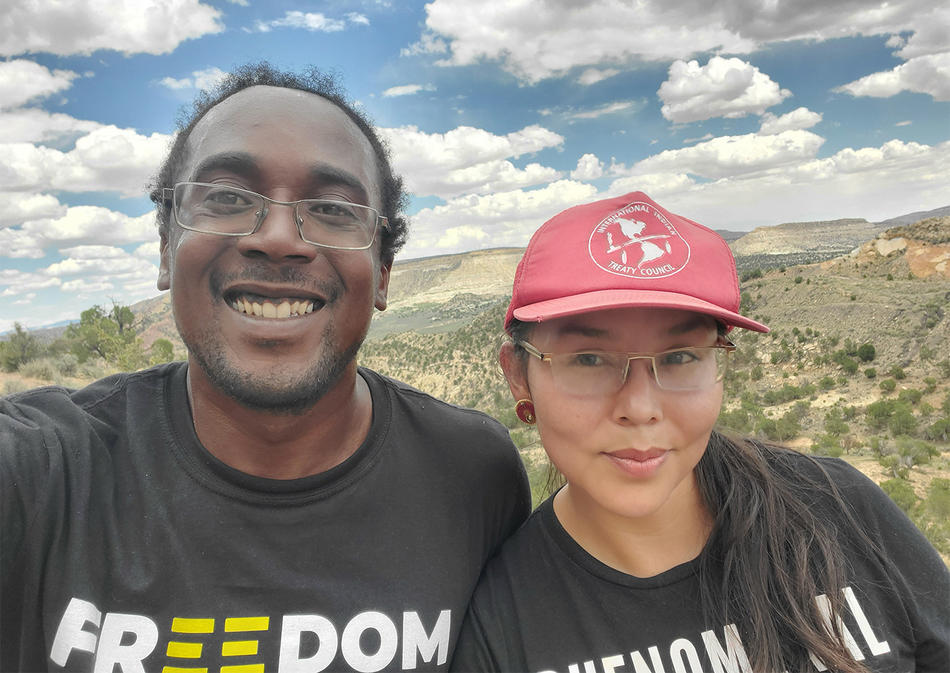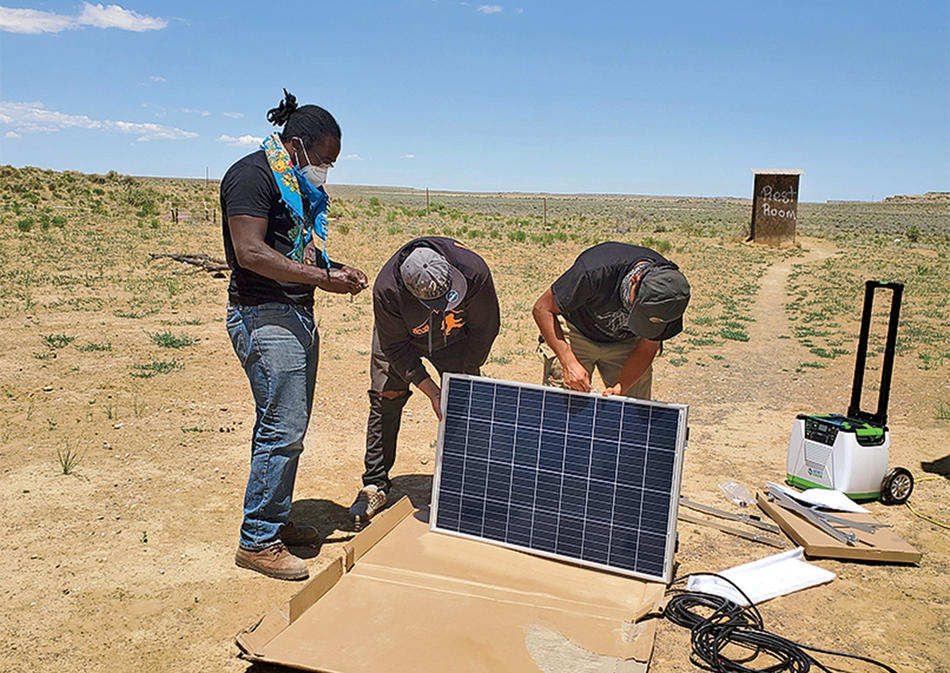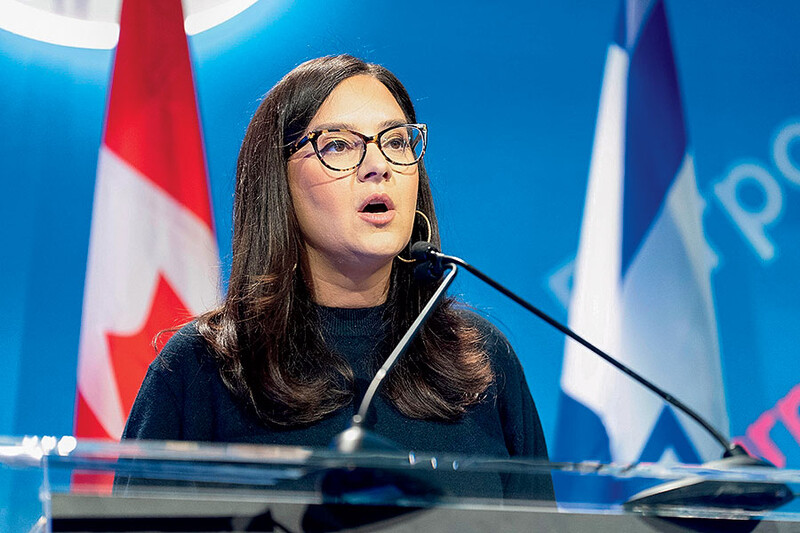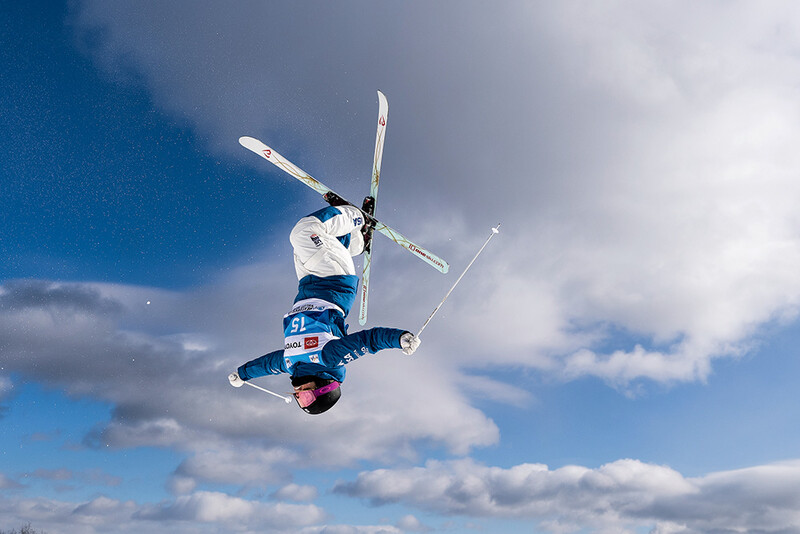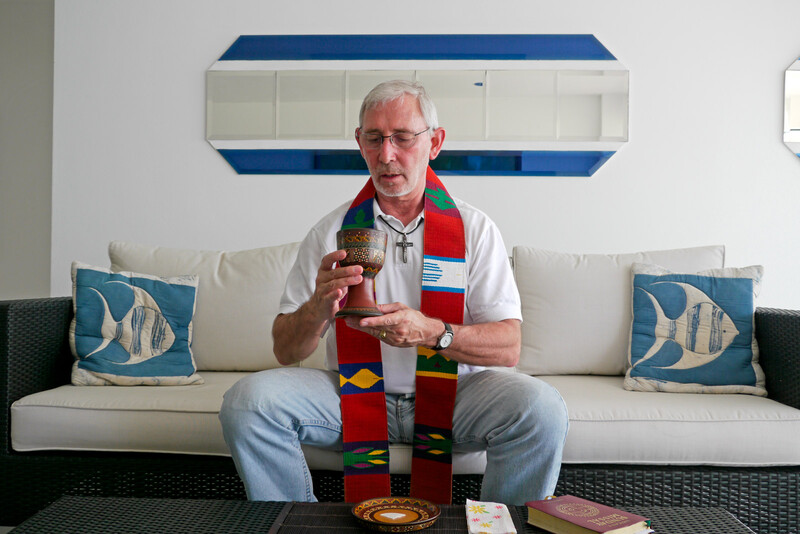In late spring, the epicenter of the coronavirus pandemic in America was arguably not a major metropolitan area but a large swath of the rural Southwest — the Navajo Nation. For several harrowing months, the reservation saw some of the highest per capita infection and mortality rates in the country. By late July, there were some signs of hope. Cases reached a plateau, and deaths began to decline. But Janene Yazzie ’10BC, a member of the Navajo Nation who works with her husband, Kern Collymore ’10CC, as an advocate, consultant, and community organizer on the reservation, where she was born and raised, says that the crisis still feels urgent.
“The numbers are improving, but there is also less widespread community testing than there was at the peak, so we don’t know exactly what we’re dealing with,” Yazzie says. “People are still dying every week.”
Yazzie and Collymore are more qualified than most to understand the issues affecting the Navajo. After graduating from Barnard and Columbia, respectively, they founded Sixth World Solutions, a consulting firm that works with Navajo communities on everything from grant writing and business-plan development to youth outreach and educational workshops. Since the initial COVID-19 outbreak in the US in early March, they have focused most of their time on efforts to combat the crisis.
Initially, Yazzie and Collymore partnered with the COVID-19 Navajo and Hopi Families Relief Fund to get food and medical supplies to Navajo communities. In addition to organizing volunteers, raising money, and soliciting supplies, the couple, who live in a small town on the Arizona–New Mexico border with their two young children, spent their days making deliveries of food, masks, gloves, gowns, and other goods to remote areas. “These are often places without paved roads or addresses,” Collymore says. “It would take us two or three hours to reach a single house.”
As cases surged on the reservation in May and June, Yazzie and Collymore began to take on different roles within the relief effort, hoping to do work that would have more of a long-term impact. “There are now a lot of people on the ground doing food work,” Collymore says. “We wanted to shift focus and gear up for winter — which is likely to bring a new outbreak — and beyond.”
Collymore is now spending most of his time on projects that support sustainable farming, such as installing rainwater-collection systems and solar generators on local farms. Meanwhile, Yazzie is working with a network of mutual-aid groups in the region to solicit donations. She is also very active in the international indigenous community and has been developing a series of webinars on the impact of the virus on the Navajo Nation and participating in meetings to learn how other global indigenous groups have worked to combat the pandemic.
“In addition to focusing on the immediate needs, we’re trying to recognize and address the root causes of the crisis,” Yazzie says.
One of those root causes, she says, is a lack of access to food and medical care. The Navajo Nation spans over seventeen million acres, covering large portions of Arizona, New Mexico, and southern Utah. It’s bigger than ten US States by area, and it has a population of nearly 175,000. But despite its size, there are just eight health-care facilities and thirteen grocery stores servicing the entire reservation, says Yazzie. And that’s just the start of the list of circumstances that may be making the reservation’s COVID-19 crisis particularly acute.
“The Navajo people have a whole slew of preexisting conditions that are the result of years of environmental contamination — things like uranium mining, coal mining, and fracking,” she says. “There was also a significant delay in testing, so once the first cases emerged, there was no way to track or contain it. Families live communally, so social distancing and isolating is impossible. And up to 40 percent of Navajo families don’t have running water, making hand-washing more difficult.”
In addition to these vulnerabilities, a significant portion of the reservation lives below the poverty line, which made it impossible for them to stock up on supplies at the beginning of the pandemic. Once the reservation closed its borders, the few grocery stores were quickly overrun, contributing to further spread.
“We’ve been working on the reservation a long time and are aware of the endemic problems that make this population so vulnerable,” Yazzie says.
Yazzie and Collymore are hopeful that their work will not only help the community through this difficult time but will also address some of the larger social and environmental issues within the Navajo Nation.
“We’re really trying to think about the long-term future,” says Collymore. “When COVID is finally behind us, our hope is that the community will actually be in a better place than it was before the virus hit.”
This article appears in the Fall 2020 print edition of Columbia Magazine with the title "Hope on the Reservation."
